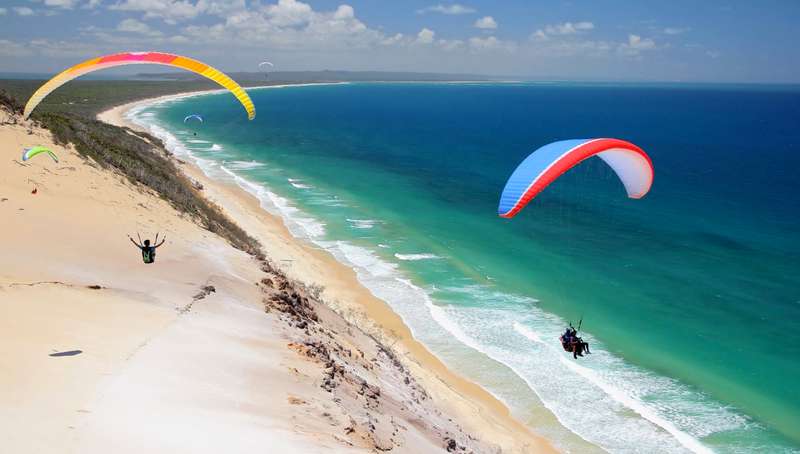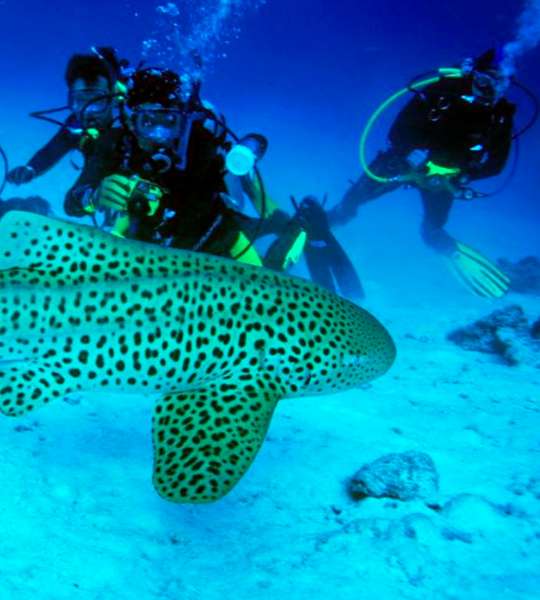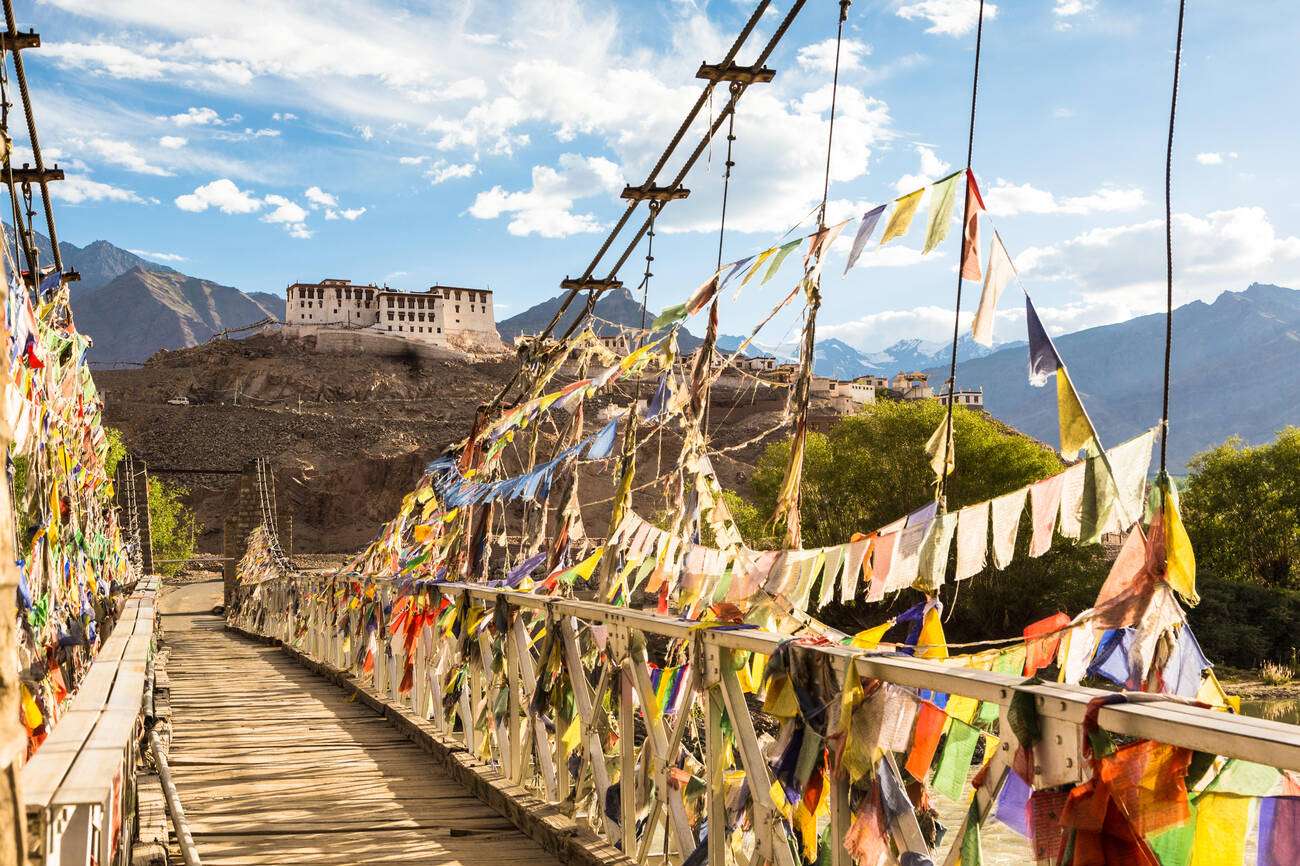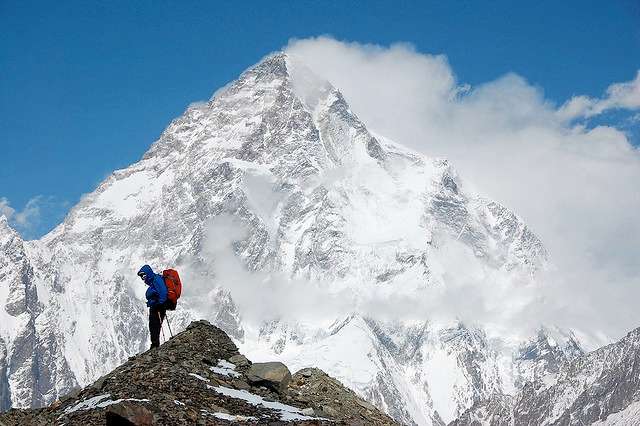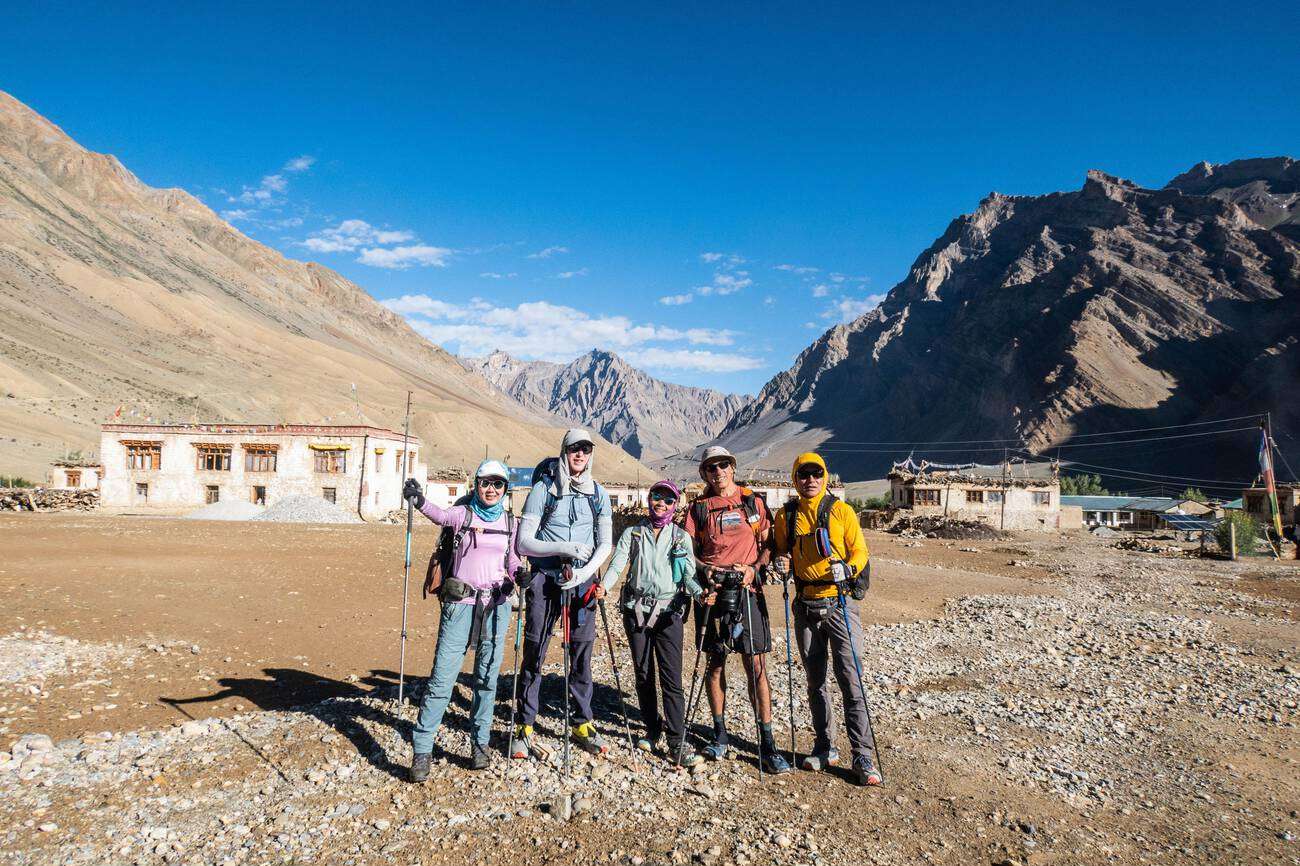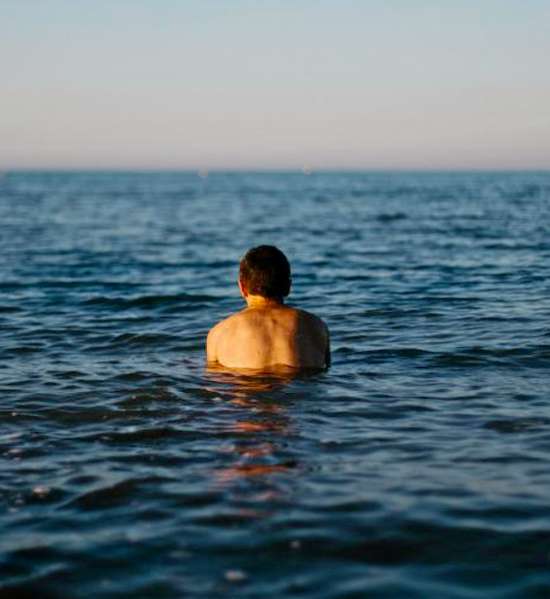Kargil
About Kargil
Get ready to explore the stunning valleys, pristine rivers, high rocky mountains and rugged terrains of Kargil. Thrillophilia’s Kargil packages and Ladakh trips not only offer you a chance to witness its scenic beauty but also take you through its rich history. These packages are all-inclusive of accommodations, meals, local transfers, tours, activities and local guides. Additionally, there is a diverse range of packages suitable for every pocket which you can even customise to your likings.
Kargil boasts a number of exciting attractions such as Kargil War Memorial, Mulbekh Monastery, Munshi Aziz Bhat Museum and Rangdum Monastery. Another extremely popular attraction is the Suru Valley which is known for its meandering rivers, lush greenery and apple orchards.
You can make your trip to Kargil more exciting and adventurous by indulging in its fun activities. If you are an adrenaline seeker, you can explore the challenging but scenic trekking trails of Kargil. Some of the must try trekking routes are Padum-Lamayuru, Sankaru-Dras, Lamayuru-Leh, Padum-Hemis and Nunkun. Additionally, you can try adventure activities like mountain biking, river rafting, jeep safari and camel safari. One of the highly recommended activities is to spend a night camping in Kargil amidst its barren mountains.
You can experience all of this and more with Thrillophilia’s budget-friendly and well-curated packages. Additionally, we offer 24x7 customer service and on-ground assistance to make your trip even more smooth and enjoyable.
Kargil Packages
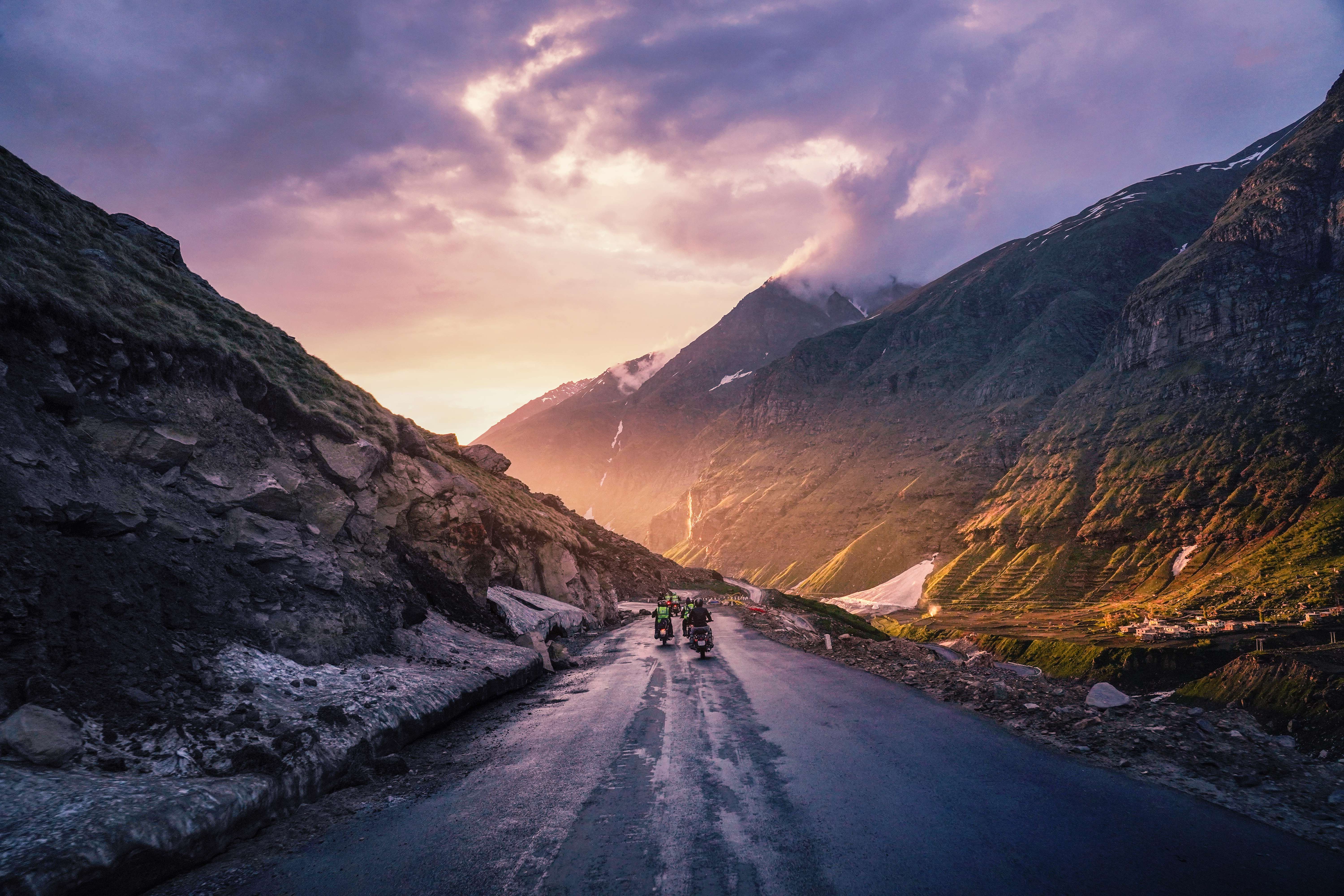
Manali Leh Srinagar Bike Adventure
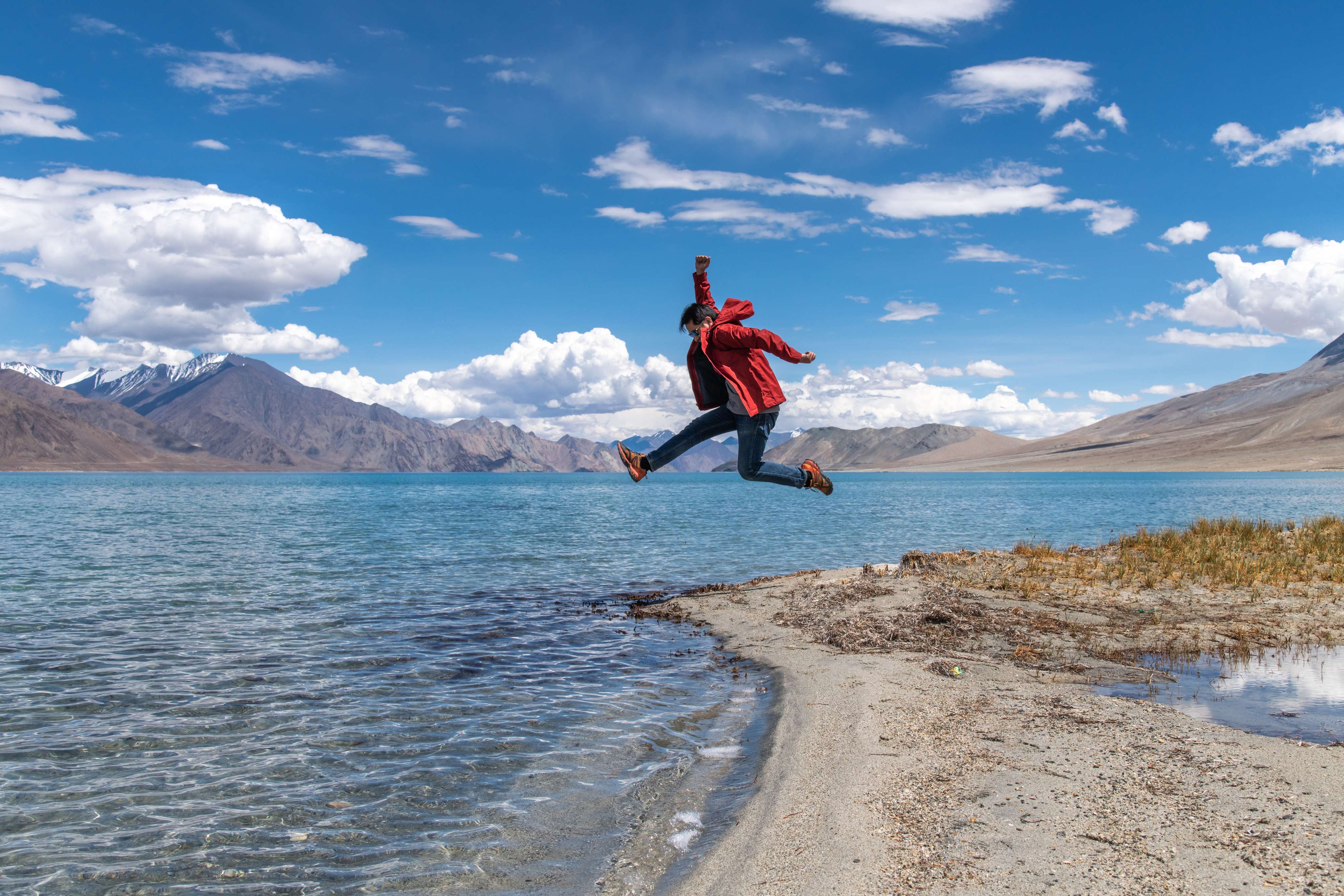
Incredible Ladakh with Hunder Sand Dunes
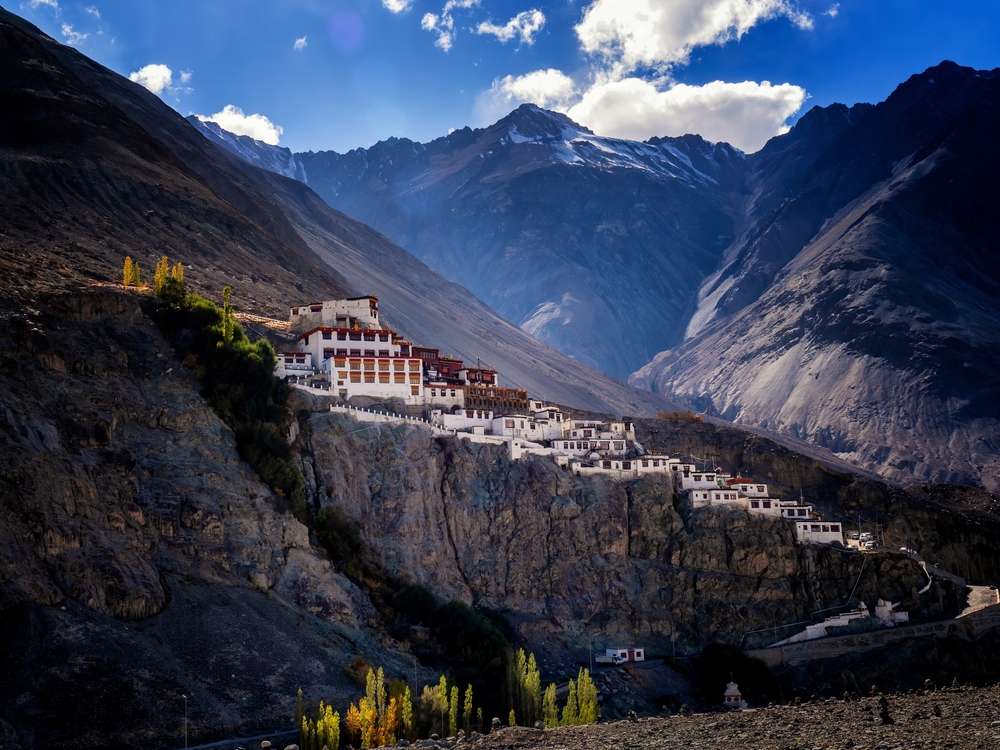
Himalayan Expedition | Srinagar And Leh Ladakh COMBO Deal
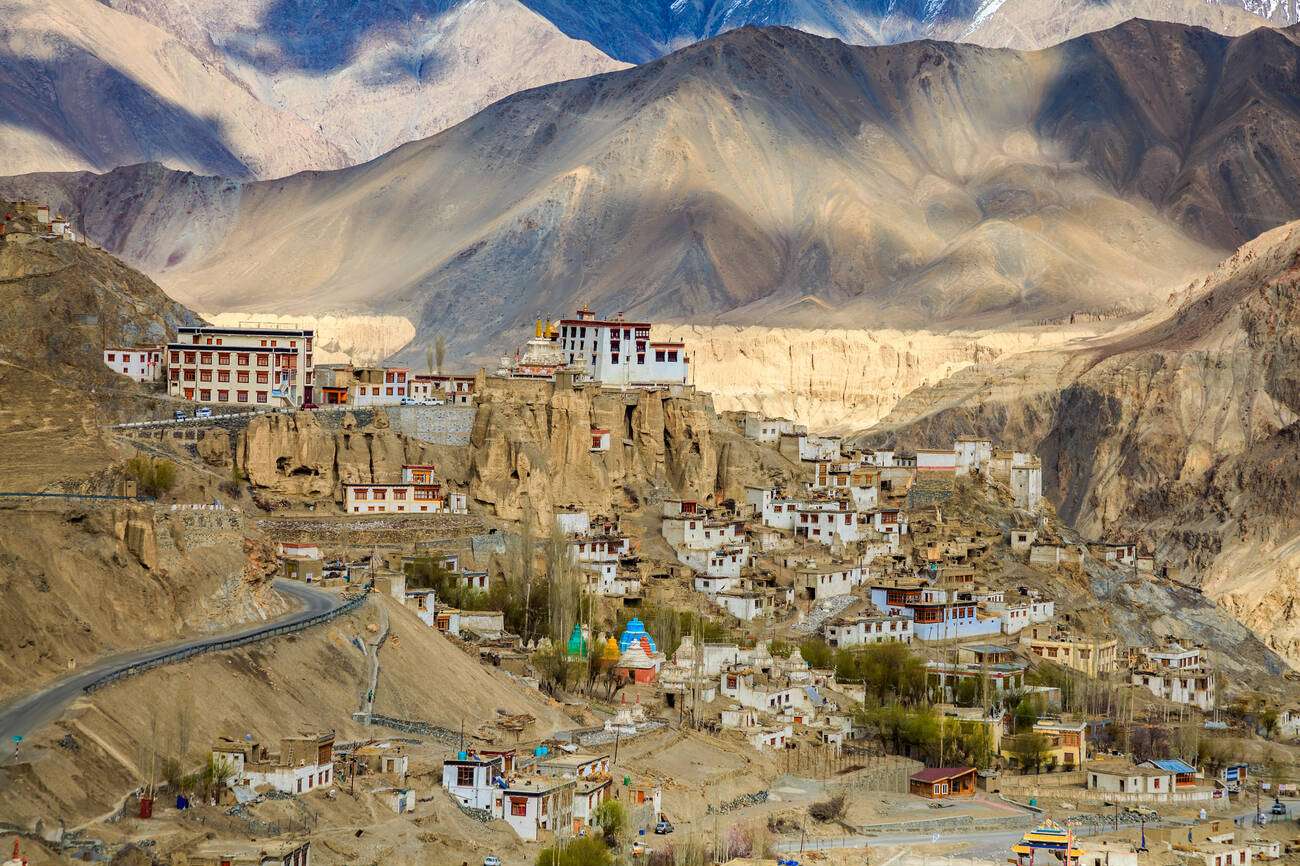
Leh Ladakh Srinagar with Pangong Lake
Kargil FAQ's
What is Kargil famous for?
Located in the Union Territory of Ladakh, Kargil is a famous place for being the war battleground of the 1999 Indo-Pak war. It is also renowned for hosting a unique heritage, culture, and natural wonders like lush valleys, steep mountains, and vast grasslands. The distinct mountainous landscape of this place, the attractions like the Kargil War Memorial in Drass, and the mulberry orchards of the Suru Valley all add to the beauty of this destination.
How much does a trip to Kargil cost?
A trip to Kargil can cost around INR 25,000 to INR 40,000 per person for 8-10 days. This price range is inclusive of meals, local transfers, standard accommodations, and guided sightseeing tours. You can also customise your trip itinerary as per your convenience and travel interests. However, that can affect the overall cost of your trip.
What are some of the best places to visit in Kargil?
1. Lamayuru Monastery- This is one of the oldest and largest monasteries in the region. It is located in the village of Lamayuru, also known as the Moonland of Ladakh, and is visited by tourists from all over the world.
2. Kargil War Memorial- You can pay respect to all the brave soldiers who sacrificed their lives in the Kargil War. It is one of the most important attractions of the place that can send chills down the spine of all travellers.
3. Munshi Aziz Bhat Museum of Central Asian And Kargil Trade Artefacts- Established by a prominent trader of the region, this is a non-profit family-operated museum. It features the artefacts traded between central Asia and Kargil, like showpieces and cultural motifs.
4. Mulbekh Monastery- This spectacular monastery houses a 9 m tall ancient statue of Maitreya Buddha, chiselled on the rock surface. It is located at an elevation of around 11495 feet, and you can witness inscriptions on the walls of this monastery.
5. Dha Hanu- Dha and Hanu in Kargil are the only villages inhabited by the Drogba tribe. The people of this village have a vibrant culture of wearing unique hats and ornaments, so tourists can get a glimpse of the unique heritage of the place.
What are some of the best things to do in Kargil?
1. Explore the Shargole Monastery- Also known as the Cave Monastery, the Shargole Monastery is one of a kind. It is located on the top of a granite hill and provides panoramic views of the surroundings.
2. Trek to the NunKun mountain- Being a difficult trek, this trek can be undertaken by expert trekkers and explorers. You can witness the vast snow-covered landscapes and the lofty mountains on this challenging trail.
3. Visit the Suru Basin- The Suru Basin receives water from the Pensi La glacier, and during the summer season the entire region turns lush green. You can find several orchards of apples, mulberries, and walnuts here.
4. Tour the Drass Valley- It is known as the second coldest inhabited region of the world. It is also known as the ‘Gateway to Ladakh’ and is located at an elevation of 10,500 feet above sea level.
5. Witness the Drang Drung Glacier- Located near the Pensi La (mountain pass), this glacier is a magnificent sight to behold. With an elevation of 4780 m and extending over 23 km, it is the largest glacier in Ladakh.
What you will like there?
Pashmina shawls and the semi-precious gemstones are another must-have item when in Kargil region of Kashmir. Other things that have become synonymous to the Kargil region include the apricot jam and dried apricots which please the tourists with its fascinating taste. Besides all this, you can also find cloth printed with religious themes here. They are sold at every second shop here. So, whenever you are in the Kargil region, go ahead and shop for the alluring souvenirs, just as much as you like
2. Adventure Activities: Kargil is centrally located. Its location allows the tourists to undertake several road trips to Leh Ladakh or the nearby regions. Several treks originate both in and around this region. Some of the treks that you can undertake include the Lamayuru Leh trek, NunKun trek trail, Padum Lamayuru trail, Sankaru Dras trail. Given the weather conditions here, trekking can be a challenging experience. The best trek routes include the mountain lakes as well as the areas of Zanskar and Ladakh.
Another water sport that you can enjoy in Kargil is rafting. The common rafting routes here include the Zanskar and river Indus. Other multi-polar tributaries also assure a good rafting experience. It is labeled as the most adventurous and thrilling activity here. You can also visit Ladakh attractions and try different adventures like Ladakh treks.
3. Locals: The locals here are very warm and friendly. They’ll greet you with respect and help you in any manner possible. You must try and be as friendly with the locals as possible
4. Climate: If you wish to beat the heat of the lower plains, you must plan a visit to Kargil region right away. However, since the weather is chilly you must carry a significant amount of woolen clothes here. Don’t forget rugged boots to travel with ease.
Do I need any documents while visiting Kargil?
Visitors from outside India who want to embark on a Kargil trip must carry a valid passport and a visa along with two digital photographs of the person. You will also need a Ladakh Protected Area Permit or the PAP while touring Ladakh and its adjacent regions.
Click Here to Book: Ladakh Honeymoon Package From Delhi
What should I carry while going to Kargil?
There are certain essential items you should carry while visiting the district of Kargil.
Here is a list of the most suitable clothes for the area that you should take with you:
Goggles and sunscreen lotions with SPF amount 30 or higher for protection from sun and UV-rays
Vaseline and lip balms
Windproof jackets, woollen socks, mufflers and caps
Gloves for the bikers
Hardy, waterproof shoes which can protect your feet from the cold and help you climb difficult, mountainous terrain
Suggested Read: Exciting Srinagar to Leh Road Trip
Your emergency medical kit must contain the following items-
Antiseptic medicines and solutions
Balms for body aches and pains
Medicines for headaches
Medicines for stomach aches and nausea
Medicines for body pain and dizziness
Sufficient amount of Band-Aids
Mustard oil for applying in nostrils as the winds are cold and dry in Ladakh and nostrils can become dry and painful due to this condition
Click Here to Book: Manali to Leh Ladakh Bike Trip From Delhi
Personal papers and documents such as -
A few copies of your birth certificate
Proof of residency, such as your Aadhaar Card, bank passbook, Voter ID card, etc.
Your passport (if any)
Driving license (if any)
A few copies of each of these documents
Also Read: Leh Ladakh Bike Trip
Other miscellaneous items should include dry foods, toiletries and handy items such as-
Torch with extra batteries
A multipurpose pocket knifes
Biscuits, nuts, chocolates and your own supply of water
Toothbrush and toothpaste
Combs, paper soaps, face wash and moisturizer
Phone charger
Medical Insurance (if any) and a map of Ladakh
Checkout and Book: Manali Leh Manali Jeep Safari
Are rented bikes allowed in Kargil?
Suggested Read: Motorbike rental in Ladakh
Can I go shopping in Kargil?
It is also a great place to sample the local street food, which is available in small stalls spread throughout the market. All items here are available at a very affordable price.
Recommended Read: Road Trip to Leh Ladakh
what are the best places to stay in Kargil?
1. Hotel Siachen
Hotel Siachen is situated near the Main Market, near the Old Taxi Stand. It is a very comfortable hotel offering 4-star accommodation, modern facilities and great in-house food options.
2. Hotel Kargil Heights
This hotel provides great hospitality, along with amenities such as 24-hours front desk, prompt room service, free WiFi, private balconies, room service and much more.
Click Here to Book: Premium 6 Days Leh Ladakh Sightseeing Tour
3. Horizon Ladakh Camp
Horizon Ladakh Camp is situated on Wakha Mulbekh, Near Kargil petrol pump. This is a luxury camp cum tent and offers an open terrace for a great view of the town. This camp offers free Wi-Fi, a garden and free parking
4. Hotel Chhutuk Heights
Hotel Chhutuk Heights is situated on Chhutuk Hydel Project Road, Kargil. This hotel is popular for its racing events, where guests are also allowed to participate and its expansive gardens. They are also known for their warmth and professional services.
Suggested Read: Leh Ladakh Bike Trip
What things should I keep in mind while visiting Kargil?
It is important to get enough sleep between trips and eat good healthy food. It is also important to remember that less exertion will help the body get used to the low oxygen levels and high altitudes.
Checkout & Book: Leh Ladakh Tour Package from Delhi
Which are the best hotels in Kargil?
1. Hotel Siachen
Located in the heart of the city of Kargil, Hotel Siachen is right beside the main market which has all important facilities like a bank, the post office, and the tourist help center. With 27 clean and comfortable rooms, this hotel provides facilities like free Wi-Fi, 24 hour room service, cable TV and taxi hire facilities.
With each room having its own balcony, the hotel also provides buffet breakfasts every morning, and the restaurant menu offers a wide range of dishes from the Indian, Chinese, continental and Ladakhi cuisines made of fresh produce.
2. Hotel The Kargil
With the aim of providing high quality services in one of the remotest parts of the world, Hotel the Kargil is run by the Bagh family, popularly known in Ladakh for their warm hospitality. The hotel’s fine dine restaurant is open every day from 6 am to 10 pm and serves exquisitely prepared buffet meals for breakfast, lunch and dinner.
For the tourists coming in in a self-drive vehicle, the hotel also offers a complete car checkup before the guests hit the road again. One service the sets this luxurious hotel apart from the rest is its absolutely free of cost laptop rental facility, along with a free connection of Wi Fi.
Click Here to Book: Leh Ladakh Package For Couple
3. Hotel Greenland Kargil
Located in the heart of the city, this big hotel with 35 deluxe and standard rooms is a great place to stay at in Kargil. With an uninterrupted view of the Kargil hills, this hotel offers an Internet connection, laundry service, a lip smacking menu of Ladakhi, Indian, Chinese and continental dishes, and a 24 hour room service during peak season.
The highlight of the hotel is that its pet friendly, so now you can easily plan a trip to Ladakh with your dear pet, without much hassle!
4. Caravan Sarai
With 40 fully furnished luxurious rooms, the Caravan Sarai Hotel in Kargil offers independent baths with running hot water, and open sitting spaces which make for a great spot to marvel over the vistas of the Kargil hills while sipping on some hot cuppa! With mouthwatering Indian, Ladakhi, Chinese and continental dishes served at their multi cuisine restaurant, this is one of the best places to stay in Kargil.
Checkout & Book: Leh Ladakh tour package From Mumbai
5. PC Palace
Known for its perfect amalgamation of the old world charm of Kargil hospitality, along with the comfort of modern day hotels, PC Palace in Kargil is your home away from home. With seasoned professionals, trained to curate customized trips for their guests, this hotel also serves as the one stop place to plan your adventures ahead of Kargil.
With basic as well as luxurious amenities including free Wi Fi, free parking, 24 hours room service, café etc., this makes for a cozy yet comfortable stay in the lap of Himalayas.
6. Barula Hotel
For guests looking for simple living, a place where one can unwind and relax, Barula Hotel is the place to be at. With spacious and comfortable rooms, tastefully designed to make the guests feel at home, this hotel has all basic facilities like Wi Fi, 24 hour room service, doctor on call etc.
Click Here to Book: Manali Leh Srinagar Bike Trip
7. Hotel Rangyul
Located on the Kurbathang Kargil- Leh highway, 6 kilometers away from the main city, this hotel offers separate wooden cottages with stunning views of the mountains from all sides. With 4 luxurious suites and 6 double bed deluxe rooms, Hotel Rangyul has accommodation to suit every need and budget.
A roof top garden, private balconies in each room, and a multi cuisine restaurant serving vegetarian, non- vegetarian as well as Jain meals makes this place perfect for everybody.
8. Hotel Zojila Residency
With its ideal location away from the hustle bustle of the main city, in a more peaceful setting, this hotel is perfect for those looking for some peaceful time. With the rooms overlooking the magnificent Suru River, the hotel is the place to be at for your late evening tea session! The hotel also has all basic amenities like Internet facility, doctor on call and laundry service etc.
The hotel specialty is hands down its magical dining location situated right on the banks of the Suru River!
Checkout & Book: Leh Ladakh Package From Bangalore
9. Royal Gasho Hotel
Due to its majestic royal touch, Hotel Royal Gasho is one the best places to stay at Kargil. With is on call doctor, laundry service, car rental facilities and fully furnished deluxe room, this hotel is truly a class apart.
Is Kargil safe to visit?
Although Kargil’s political past has been unstable due to the Kargil War of 1999, it is now a perfectly peaceful city in the present day, making it a haven for tourists and mountain lovers.
Click Here to Book: Manali To Leh Cycling Tour
Is Kargil worth visiting?
Absolutely, with its stunning vistas of the Himalayan mountains, its deep rooted ties to the War of 1999, ample of trekking trails, and its rich history of the trade route from Central Asia, Kargil makes for the perfect vacation spot for any kind of traveler- be it a hiking enthusiast, someone looking for solace in the mountains, or a history buff!
What is the distance between Kargil and Leh?
Kargil is located at a distance of about 218 kilometers from Leh.
What is the weather condition in Kargil?
Kargil experiences extreme winters and moderate summers, with the temperatures ranging from -10 to -25 degree Celsius in winters, and 30 degrees to -5 degree Celsius in the summer months.
Does Kargil have an airport?
Kargil has a military airfield, making it one of the four airports of Jammu and Kashmir. Although the operations at the Kargil airport are primarily for military purposes, in 2012 Air Mantra became the first civilian commercial flight to land at the airport. However, this service never took off and there are talks of renewed attempts to make Kargil a fully functional airport soon.
When did Kargil war happened?
Kargil War took place in 1999 between Indian and Pakistani armed forces when Pakistani military infiltrated Indian land, disguised as Kashmiri terrorists.
Why is Kargil famous as a tourist place?
Kargil is a famous historical battlefield, serving as a popular tourists stop for travelers visiting Ladakh.
When is the best time to visit Kargil?
The best time to visit Kargil is during the summer months of March to June. The roads are open during this time and the weather remains pleasant. The days are warm and the nights are cold during this time, making it perfect for sightseeing and trekking. You can see the Suru Valley in full bloom, with the orchards being verdant and the Suru River flowing flawlessly.
How to reach Kargil?
1) By Air- The nearest international airport to Kargil is the Srinagar Airport, situated around 225 km apart. The closest domestic airport is the Leh Airport, located 214 km away and it takes around 5-6 hours to reach. Upon reaching either of these airports, you can easily hire a cab or board a bus to reach your desired destination in Kargil. However, as the options are limited, it is suggested to enquire about the bus and taxi timings from before.
2) By Train- The nearest railway station to Kargil is Jammu Tawi, located around 452 km away. It can take around 10-11 hours to cover this distance. Alternatively, from there you can take a bus or cab to Srinagar and hop on a bus again to reach Kargil (covering 202 km in 5 hours). Alternatively, you can take a flight from Srinagar to Leh and reach Kargil from there (covering 216 km in 4.5 hours).
3) By Road- You can hire a cab or drive your own vehicle from Srinagar or Leh to reach Kargil. There are multiple buses operating from Srinagar and Leh to Kargil. The major bus corporations functioning here are JKSRTC and Ladakh Corporation LBOC, and there are deluxe buses available too. However, these services are limited and it is advised to plan your journey accordingly.
Newly Added Kargil Experiences
Kargil Reviews
